- Kenmore refrigerator water filters
- Whirlpool refrigerator water filters
- Samsung refrigerator water filters
- GE refrigerator water filters
- LG refrigerator water filters
- Frigidaire refrigerator water filters
- KitchenAid refrigerator water filters
- Maytag refrigerator water filters
- Kenmore Elite refrigerator water filters
- Estate refrigerator water filters
- GE Profile refrigerator water filters
- Amana refrigerator water filters
- Bosch refrigerator water filters
- Dacor refrigerator water filters
- Electrolux refrigerator water filters
Laundry Center: Why won't my laundry center dryer start?
If the dryer doesn't start when you push the start button, make sure the door is shut completely. If the dryer still won't start, a failed door switch, faulty push-to-start switch, wiring failure, bad dryer drive motor, blown thermal limiter fuse, bad electronic control board or failed dryer timer could be preventing the motor from running.
First, unplug the laundry center and check the wires connected to the dryer door switch. Reconnect any loose wires and repair any broken wires.
If the door switch wires are okay, check for continuity through the dryer door switch using a multimeter. Replace the dryer door switch if you don't measure continuity through the switch with the dryer door closed.
If the dryer door switch is okay and your laundry center uses an electronic control board to manage dryer functions, check the wiring connections between the electronic control board and the dryer drive motor (with the dryer still unplugged). Reconnect any loose wires and repair any damaged wires. The dryer electronic control board typically signals an error code when the board detects a component problem and doesn't send current to the dryer drive motor. If you see an error code on the dryer display, look up the error code on the error code chart and troubleshoot the cause. The dryer drive motor will likely run again after you find and fix the cause of the error code.
If your laundry center uses a timer to control dryer functions, check the wiring connections between the timer, push-to-start switch and dryer drive motor (with the dryer still unplugged). Reconnect any loose wires and repair any broken wires.
If the timer wiring connections are okay, check for continuity through the push-to-start switch with the start button pushed in. Replace the push-to-start switch if you don't measure continuity through the switch while pushing the start button in.
If the push-to-start switch is okay, check for continuity through the dryer timer. Use the wiring diagram for the laundry center as a guide for checking continuity through the timer. You can typically find the wiring diagram stored in the console (also known as the control panel) of the laundry center or on the parts list diagram. Replace the timer if you don't measure continuity through the timer contacts that send current to the dryer drive motor.
Many electric dryers in laundry centers use a thermal limiter or thermal fuse to shut off the dryer motor if the laundry center overheats. With the dryer still unplugged, check for continuity through the thermal limiter or thermal fuse and replace that limiter or fuse if you don't measure continuity. A clog in the exhaust vent system for the laundry center often causes the thermal limiter or thermal fuse to blow, so check the dryer's exhaust system for a clog if the thermal limiter or thermal fuse is blown.

THESE REPAIRS MAY HELP SOLVE YOUR LAUNDRY CENTER PROBLEM

Replace the laundry center door switch
The dryer door switch detects whether the dryer door is open or closed. The dryer won't start if the door switch senses that the door is open. If the switch reads the door as being open when it's shut, or if it allows the dryer to keep running when the door is open, replace it.
Laundry center door switch
Find the required part specific to your product.
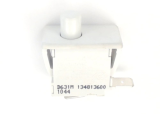
How to replace a laundry center dryer door switch
If your laundry center dryer won't start or the drum light won't come on when you open the door, the dryer door switch could be to blame. This repair guide and video show how to replace a laundry center dryer door switch in 6 quick steps.
Repair difficulty
Time required
15 minutes or less

Replace the laundry center dryer timer
The timer controls the components in the dryer. Also called a cycle selector, the timer has a motor that advances the internal cams inside the timer body. The cams open and close electrical contacts to energize and de-energize components during the wash cycle. A control knob on the stem of the timer lets the user select cycles on the timer. If the timer motor doesn-t advance or the contacts are defective in the timer, replace the dryer timer.
Laundry center dryer timer
Find the required part specific to your product.
Was this information helpful?
Most common symptoms to help you fix your laundry centers
Choose a symptom to see related laundry center repairs.
Main causes: lack of water supply, failed lid switch or lid lock, bad water level pressure switch, control system failur…
Main causes: bad lid switch or lid lock, drive motor failure, broken motor coupler, bad timer, faulty electronic control…
Main causes: blocked exhaust vent, clogged lint screen, bad timer, moisture sensing problems, weak gas valve coils, bad …
Main causes: broken dryer drive belt, weak drive motor, binding drum seals…
Main causes: control system failure, broken heating element, bad gas valve coils, gas supply failure, voltage supply pro…
Main causes: unbalanced load, broken suspension springs or shocks, worn snubber ring…
Main causes: door not fully shut, bad door switch, faulty push-to-start switch, wiring failure, bad drive motor, blown f…
Main causes: clogged drain system, blocked drain hose, bad drain pump…
Main causes: broken lid switch or lid lock, faulty drive motor, drain system problem, broken drive system components…
Most common repair guides to help fix your laundry centers
These step-by-step repair guides will help you safely fix what’s broken on your laundry center.
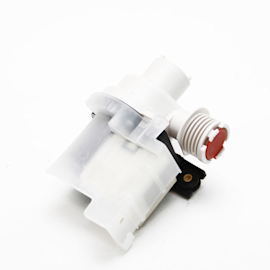
How to replace a laundry center washer drain pump
If the washer won’t drain because the drain pump failed, follow the steps in this repair guide to replace it.…
Repair difficulty
Time required
15 minutes or less
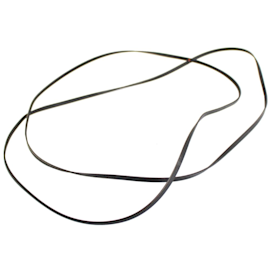
How to replace a laundry center dryer drive belt
If the dryer motor runs but the drum doesn’t turn, the drive belt is likely broken. Replace it, following the steps in t…
Repair difficulty
Time required
60 minutes or less
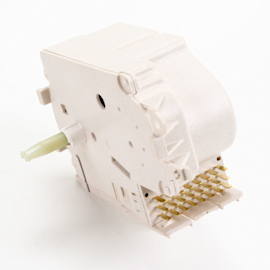
How to replace a laundry center washer timer
If the washer doesn't fill, spin or drain, the timer could be the problem. …
Repair difficulty
Time required
15 minutes or less
Effective articles & videos to help repair your laundry centers
Use the advice and tips in these articles and videos to get the most out of your laundry center.
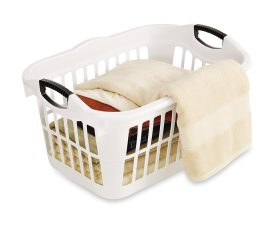
Tired of dull laundry? These 7 expert tips help you get cleaner clothes, brighten whites, and fix common washer mistakes…

Learn about all the convenient features on our Sears PartsDirect website that make your parts purchases easier.…

Get answers to frequently asked questions about Sears and Sears PartsDirect.…